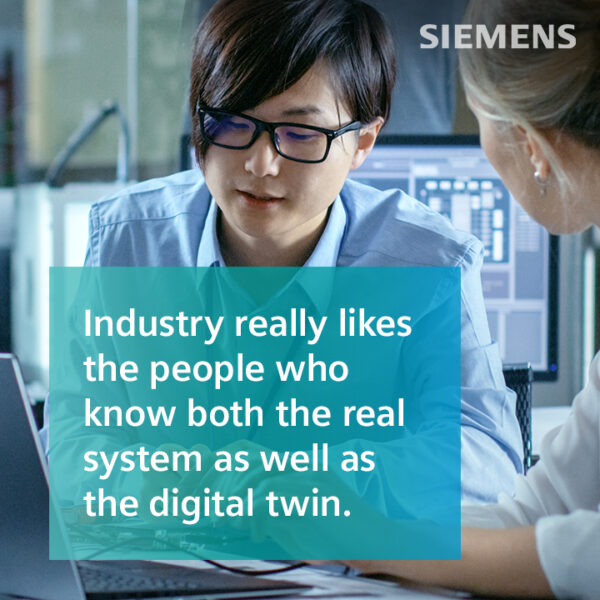A Collaborative Approach to Engineering with Digital Twins

Putting the digital twin at the heart of STEM education gives students the opportunity to try new ideas and put them into action. Without the cost that trial and error learning can have on real-world systems, students are free to innovate and work together to combine their separate experiences into a new design. Along with the freedom to try new ideas, the use of digital twins can make STEM education more accessible for students all over the world.
On this episode of Innovation in the Classroom, Dora Smith is joined by Dr. Stephan Simons, a professor of automation and control technology at the Darmstadt University of Applied Sciences. Before moving to higher education, Dr. Simons worked in medical technology for more than 11 years. During this time, he developed some of the respiratory care systems used today to fight COVID-19. In 2006, he decided to move to the automation technology business and start his career in education.
Working with a digital twin allows Dr. Simons’s students to have a platform where they can train in a hands-on way, as well as help them learn the state-of-the-art technologies that they will use in their professional careers such as Siemens NX. Taking advantage of industry and academia collaboration, Dr.Simons can better prepare his students for Industry 4.0 and get them in front of companies looking for students with their skillsets.

In addition to teaching to students who are enrolled in his engineering classes, Dr.Simons feels a responsibility to try to help bolster STEM education and possibilities for those outside of a collegiate setting. Through interactive online modules and videos, Dr. Simons can meet students where they are at online and give them the tools to pique their interest in engineering.
“I think we also have the task that we should try to educate not only our people but also the people outside. We do so in two ways. One way is we do so by videos, we create a lot of videos and we have a YouTube channel and on this YouTube channel, the clicks are exploding. There are 170,000 now, clicks on all these videos, which are tutorials. And we also create modules. For example, for Siemens Cooperates with Education, we created videos for the digital twin in education, where we tried to create tutorials plus modules which people can use to train automation technology people can use to work with, for example, the MCD, the Mechatronics Concept Designer.”
Tune into the full podcast to hear what Professor Simons has to say about the present and future of engineering, robotics, students, and the importance of collaboration between companies and universities. For more information on the Siemens partnership with UAS, click here.
Questions I Ask:
- Can you start sharing a little bit about yourself and your background? (0:46)
- Why did you decide to focus on embedding digital twins in education? (2:22)
- What are the skills you’re developing in future engineers? (5:07)
- Do you see other schools trending in the same fashion as combining the digital with the real world? (6:27)
- How do you see the future of teaching now that everything is more digital? (10:06)
- How do you keep current with the constant technology changes and improvements? (11:42)
- Would you like to see industry partners like us engaging with the university more successfully? (27:04)
In This Episode, You Will Learn:
- Why it is essential students work with digital twins (3:06)
- How our students need to be educated (5:20)
- Ecosystems that connect students communities are key (8:13)
- The future of Universities is having a combination of digital and presential disciplines (11:30)
- How tech-related courses inspire students? (14:14)
- The best way to improve collaboration between companies and universities (22:30)

Innovation in the Classroom
Innovation in the Classroom by Siemens explores best practices to empower the next generation of digital talent. In this podcast series, Dora Smith takes you through discussions with leading voices from the world of engineering education who are preparing future engineers in Academia 4.0 to shape the world of innovation.

Engineering the Future Workforce
Engineering the Future Workforce explores emerging and best practices that are empowering the next generation of engineering talent. The series will showcase conversations with leading voices from academia and industry who are committed to improving learners’ digital skillset and mindset to accelerate innovation.


